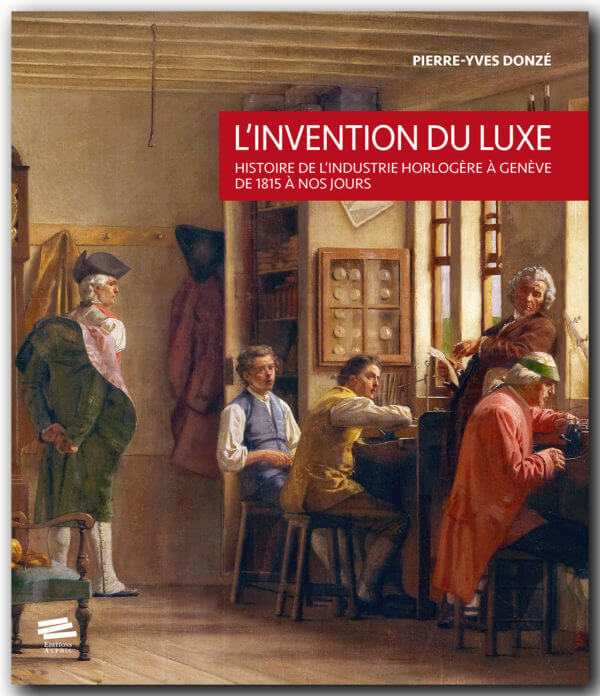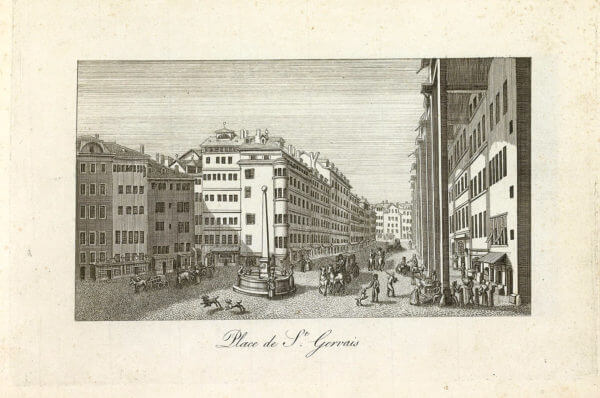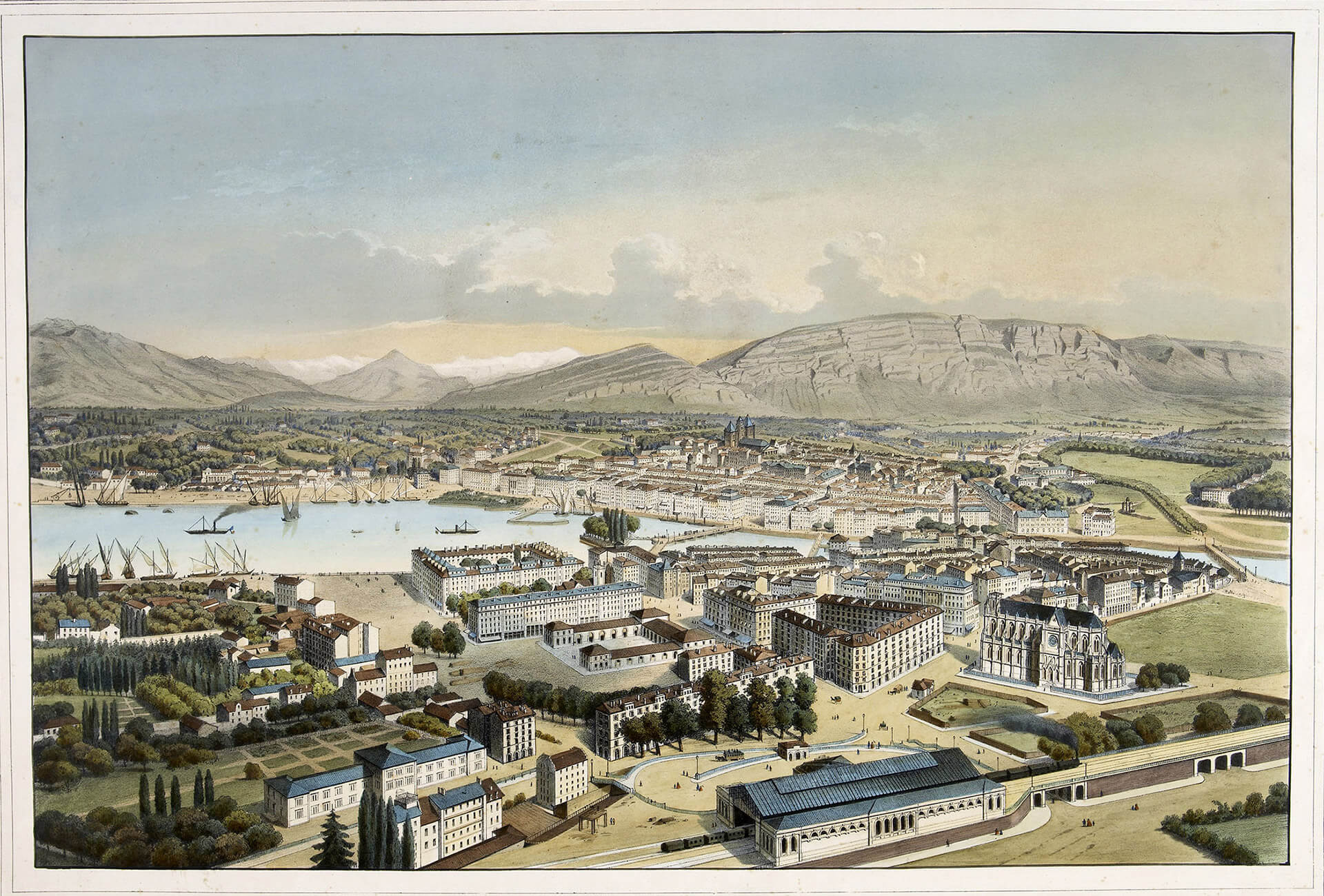How did the modern-day luxury watch industry originate in Geneva? When answering this question, Pierre-Yves Donzé reveals a little-known and surprisingly chaotic history that began in the sixteenth century. He notes how “Geneva has remained largely under the historian’s radar” hence the “difficulty of gaining a proper idea of how this sector has evolved over the past two centuries”. Dividing his research into five periods, Donzé quotes numerous sources in support of his theory that the “invention” of luxury watchmaking in Geneva is not, as is commonly believed, a tradition that originated with the city’s cabinotiers but a relatively recent phenomenon.
From the end of the Ancien Régime to 1870
Geneva was a thriving city at the time of the Ancien Régime, in particular from the late 1600s, and it was during this prolonged period of growth that it became one of Europe’s leading centres for watchmaking. The different trades were structured as corporations which, collectively, were known as “la Fabrique”. This first chapter in Genevan watchmaking ended with the French Revolution and, in its wake, the uncertain years of the early nineteenth century. Pierre-Yves Donzé highlights the difficulties of reorganising production, recourse to suppliers outside the city, the advent of mechanisation, and the rise of rival centres of watchmaking in Neuchâtel and the Bernese Jura. Proponents of change became locked in an internecine war with advocates of tradition: “Those in favour of transforming existing structures opposed supporters of quality, handcrafted watchmaking.” Among the different parties to this ardent debate, the author examines the role played by the various institutions which attempted, to no real avail, to promote the development of “luxury” watchmaking. Geneva failed to benefit from the expansion of Swiss watchmaking in general between 1815 and 1870, although as Pierre-Yves Donzé points out, “it would be wrong to interpret the continued growth of Neuchâtel and Berne, and the stagnation of Geneva, as indicative of regional specialisation, with Geneva’s watchmakers retaining their position as manufacturers of luxury timepieces.” While recognising the need to counter competition, the various protagonists were unable to agree on the best solution to adopt.

The challenge of industrialisation (1870-1914)
Swiss watchmaking faced ever greater competition from American manufacturers and the disastrous consequences of mass production – a fact driven home by the 1876 Centennial Exposition in Philadelphia. Its response, namely “a profound restructuring marked by mechanisation and a regrouping of workers under one roof”, helped boost competitiveness. Geneva, however, was a case apart. As Pierre-Yves Donzé notes, Geneva’s reputation as being “hostile to any major transformation of its manufacturing structure”, resulting in “a split between Geneva and the rest of Switzerland”, is a common misconception. “We need to go back in time if we are to better understand the transformations taking place within the watch industry in Geneva between 1870 and the outbreak of the First World War.”
This leads Pierre-Yves Donzé to the following conclusions: “There was, perhaps, a lesser tendency [in Geneva] to regroup workers compared with what could be observed elsewhere in Switzerland, but industrialisation did take place, with increased domestic production of simple, inexpensive watches.” Proponents of “modernisation within limits” who understood how machines could “improve quality and make Genevan artisans more competitive” found themselves in conflict with the defenders of a tradition which, according to Pierre-Yves Donzé, was “largely idealised” by institutions that supported their “extremely visible” actions with messages that were disconnected from reality. For the period in question, the author refutes the theory that “Geneva was the exception and remained specialised in luxury watchmaking.”

Restructuring between the wars
The years between the two world wars were a time of upheaval for Genevan watchmaking, which the author summarises in three points. Firstly, the “fabriques” (factories) drove small workshops out of business while production of “standard” quality watches increased. These developments coincided with the introduction of a cartel system and a shift away from pocket watches to wristwatches, with Geneva again following a slightly different pattern to the rest of the country. Secondly, writes Donzé, “the Geneva watchmaking school, which until the early twentieth century had opposed modernisation of the industry, was restructured” to meet the needs of industrial companies. Even so, the conservative elites continued to voice their resistance to change in publications, exhibitions and through other means which clearly indicate “the historical permanence of watchmaking excellence in Geneva”. Thirdly, the author points to the development of trade in Geneva, which became less a production centre and more a centre for sales, with many Swiss and non-Swiss manufacturers and dealers setting up business there (the book gives various examples). After the Second World War, it was this function as a centre for trade that would lead Geneva into “a new era of fabulous growth”.
*L’invention du luxe : Histoire de l’industrie horlogère à Genève de 1815 à nos jours, Pierre-Yves Donzé, published by Alphil. 2017, 224 p.
ISBN : 978-2-88930-122-5












